Healthcare-Technology for People with Hearing Loss
Patients with hearing loss can be hesitant to ask for accommodations, and these accommodations are rarely offered without requests. It is imperative that health professionals realize the high prevalence of hearing loss in all populations and proactively offer services that enable patients with hearing loss to understand the critical information communicated by healthcare professionals.
Below are some technological solutions for communicating effectively with people with hearing loss. The patient may bring their own personal equipment; however, the medical provider must have the necessary equipment on hand. These provide “auxiliary aids and services” under Effective Communication with the Americans with Disability Act (ADA).
Better Health Starts with Effective Communication
Communication access ensures that individuals with communication disabilities can fully participate in and benefit from health services and programs. By improving access, you can enhance health outcomes, reduce costs, and promote equitable care. ACCESS is a framework of six core principles. One-page ACCESS flyers are available on the website in English and Spanish languages, as well as additional information from the American Speech-Language-Hearing Association.
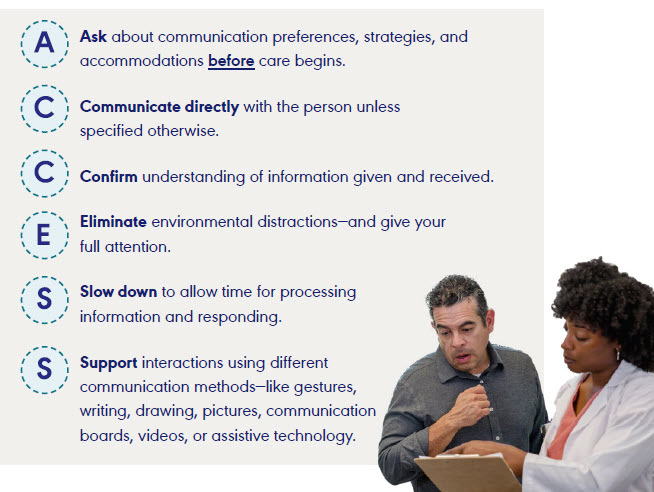
It is critically important for professionals and office staff to look directly at the patient when speaking—rather than at the computer—which is a common oversight.
The text version of ACCESS is available on the ASHA website, ACCESS.
Assistive Listening Systems
(provider owned)
Hearing loops are versatile
- Hospital bedside table with portable counter hearing loop*
- Permanent counter hearing loop at hospital info desk*
- Patient education classrooms (also FM systems)
*Patient uses telecoils in their hearing instruments to receive the sound directly or borrows a receiver and headphones.

Personal Amplification Devices
Personal amplification devices give communication access in one-on-one settings. Assistive listening systems give communication access in classrooms and service counters.
Remote wireless microphone (patient-owned)
The patient brings a small microphone which is proprietary to the hearing brand they wear. The provider wears the remote microphone and sound goes directly into the patient’s hearing instruments. Brands shown: Starkey, Widex, Med-El, Beltone
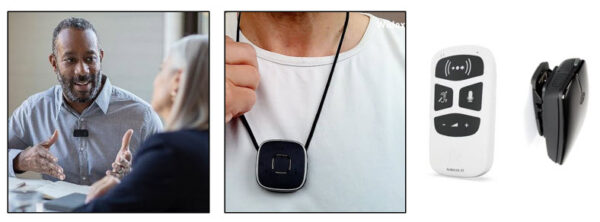
Personal amplifiers (provider-owned)
Used with headphones, earbuds, or a neckloop (for patients with telecoils in their hearing instruments)
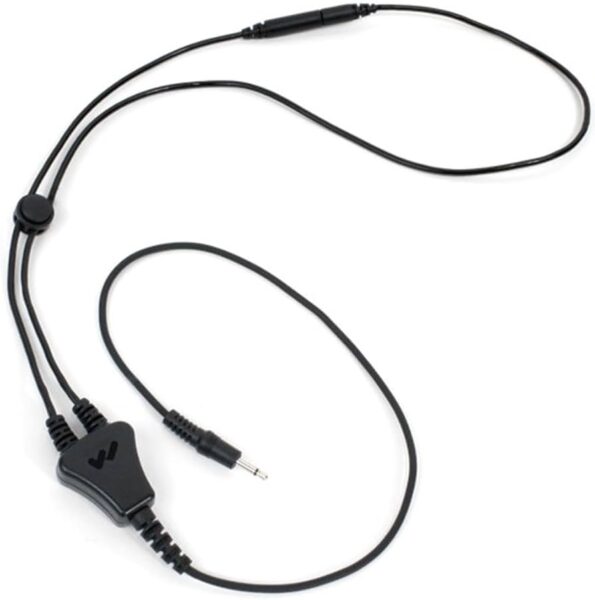
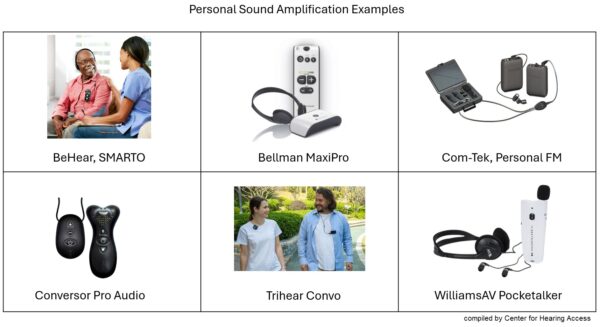
Captions
(provider-owned)
Captions can supplement assistive listening systems or personal amplification, or sometimes people prefer captions.
- Automatic captions: better for shorter interactions, such as patient check-ins. Providers need to have speech-to-text options available.
- Windows 11, for Windows and Mac, is a good option if the telehealth platform doesn’t have built-in captions. The transcription is done locally on the device, meaning audio isn’t sent to the cloud (unless configured otherwise), and thus meets HIPAA compliance.
- Ava captioning is HIPAA compliant.
- Communication Matters/Tina Childress, AuD My Favorite Captioning Apps for iOS and Android. Note, not all are HIPAA compliant.
- CART (Communication Access Realtime Translation): preferred over automatic captions for medical appointments for technical accuracy.
- In-person CART professional: usually preferable to have the best access to sound.
- Remote CART professional: has improved immeasurably. Remember to prioritize the use of the mic(s).
- Providers need to maintain a list of CART providers.
- Telehealth
- Captions can be integrated into telehealth
- Telehealth platforms are required to have captions by the end of 2026, under the “interoperable video conferencing” section in the FCC.
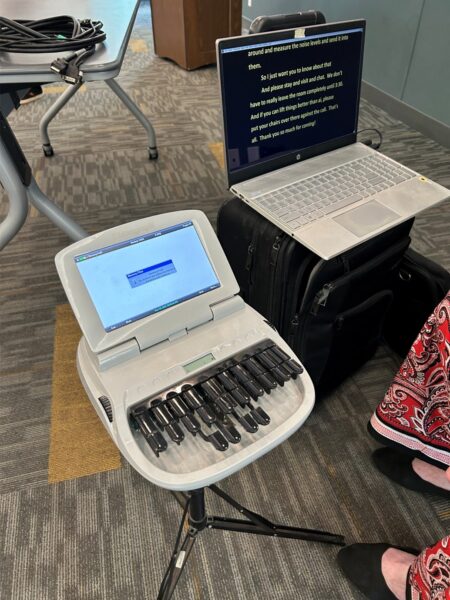
Vendors
Please email the Center for Hearing Access with revisions and additions. Contact us.
- Resellers (individual items, small systems) (this website)
- Counter hearing loops (permanent and portable) (this website)
- Personal Sound Amplifier manufacturers (all links go to manufacturer’s websites):
- BeHear, SMARTO
- Bellman and Synfon, Hearing Solutions (Personal Hearing Amplifiers: MaxiPro, Mino, Maxi Classic; Listening Systems: Domino Pro Listening System) [neckloops available] [Mino has telecoil]
- Com-Tek, AT-216 Personal FM System
- Conversor, personal amplifier (2 models: Pro, HD) [neckloops available]
- Tri-hear, Convo
- WilliamsAV, Pocketalker [neckloops available] [ver 2.0 has telecoil]
Resources
- Assistive listening systems in healthcare (this website)
- All about neckloops (this website)
- Americans with Disabilities Act (ADA) for assistive listening systems (this website)
Please email the Center for Hearing Access with corrections, additional apps, or additional products. Contact us (this website)
